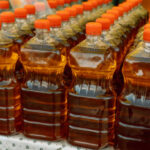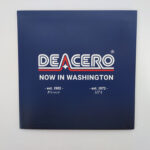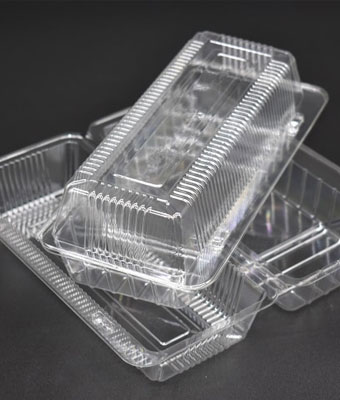pet chips, Polyethylene Terephthalate (PET) chips have become a cornerstone in the global manufacturing ecosystem. Derived from virgin or recycled PET, these semi-crystalline pellets are used extensively in the production of fibers, films, sheets, and beverage bottles. With increasing emphasis on sustainability, the PET chip market is evolving to meet the growing demand for eco-friendly, high-performance materials across industries.
This article explores the types, applications, and market potential of PET chips—and why they’re a smart investment for manufacturers and traders alike.
What Are PET Chips?
PET chips are thermoplastic polymers produced by the polymerization of purified terephthalic acid (PTA) and monoethylene glycol (MEG). Depending on their intended use, PET chips can be manufactured as:
-
Bottle Grade PET Chips
Used for beverage bottles, food containers, and other packaging materials due to their excellent clarity, strength, and food-grade safety. -
Textile Grade PET Chips
Used in the production of polyester fibers for garments, home textiles, and industrial applications. -
Film Grade PET Chips
Applied in making PET films for electronics, labeling, solar panels, and packaging. -
Recycled PET (rPET) Chips
Produced from recycled PET bottles and flakes, these chips are increasingly used due to environmental regulations and sustainability commitments.
There are several types of PET chips, each suited to specific industrial applications:
-
Bottle Grade PET Chips are primarily used to produce bottles and containers for beverages, food products, and personal care items. These chips offer high clarity, durability, and are approved for food contact applications.
-
Textile Grade PET Chips are used to create polyester fibers and yarns, which are essential in the production of clothing, home furnishings, and industrial textiles.
-
Film Grade PET Chips are used in the manufacture of PET films for applications in electronics, printing, labels, and flexible packaging.
With increasing environmental awareness and regulations, Recycled PET (rPET) Chips are gaining popularity. These are produced by processing post-consumer PET bottles into flakes, then further melted and pelletized. rPET chips help reduce plastic waste and support circular economy goals, and are used in both packaging and textile industries.
The demand for PET chips continues to grow due to their versatility, light weight, cost-efficiency, and sustainable properties. They offer excellent resistance to heat, moisture, and chemicals, which makes them suitable for high-performance applications. Their recyclability also aligns with global initiatives to reduce plastic pollution and increase the use of eco-friendly materials.
Key Features of PET Chips
-
High tensile strength and thermal stability
-
Excellent chemical resistance
-
Lightweight yet durable
-
Recyclable and eco-friendly
-
Compliant with food safety standards (for bottle-grade)
Applications Across Industries
PET chips are essential raw materials in the following sectors:
-
Packaging Industry: Bottles for water, soft drinks, juices, and food-grade containers.
-
Textile Sector: Polyester yarns and fibers for garments, automotive fabrics, and upholstery.
-
Electronics: PET films used in insulation and flexible printed circuits.
-
Green Energy: PET films and sheets used in photovoltaic solar panels.
Market Trends and Growth Drivers
-
Sustainability Shift
Major brands are committing to use 25–100% recycled PET (rPET) in their packaging, boosting demand for recycled chips. -
Global PET Chip Market Expansion
The PET chip market is projected to grow steadily due to increased demand in the FMCG, fashion, and industrial packaging sectors. -
Government Policies & Regulations
Policies promoting circular economy, extended producer responsibility (EPR), and plastic waste reduction are driving recycled PET chip adoption. -
Technological Advancements
Improvements in polymer processing, bottle-to-bottle recycling, and advanced extrusion technology are enhancing PET chip quality and efficiency.
What Buyers Should Look For
-
Quality of Scrap
Quality is critical. PET bottle scrap should be:-
Clean and dry
-
Free of contaminants like PVC, caps, labels, or other polymers
-
Properly sorted (clear, green, or mixed color)
-
Baled or compacted for cost-effective transport
-
-
Reliable Supply Chains
Establish partnerships with:-
Waste collection centers
-
Bottling plants
-
Municipal recycling facilities
-
Exporters from high-volume regions (e.g., Southeast Asia, Africa, South America)
-
-
Regulatory Compliance
Ensure the material meets local and international regulations, especially for import/export. Check for certifications like ISCC (International Sustainability and Carbon Certification) or compliance with Basel Convention rules for transboundary movement of waste.
Current Market Trends
-
Growing Demand for Recycled PET (rPET): Driven by FMCG brands and fashion companies adopting recycled materials.
-
Government Support: Many governments are offering incentives or mandates for recycled content in packaging.
-
Price Volatility: PET scrap prices fluctuate based on crude oil prices, virgin plastic costs, and global shipping rates.
Tips for PET Scrap Buyers
-
Negotiate Long-Term Contracts: Lock in supply and price stability with trusted sellers.
-
Invest in Sorting and Washing Units: Adds value to low-quality scrap and improves margins.
-
Stay Updated on Technology: Innovations in chemical recycling and AI-powered sorting are shaping the future.
-
Network at Trade Shows: Attend events like Plastics Recycling Show Europe, Plastic Waste Free World Conference, or local recycling expos to build connections.
Tips for Buyers and Traders
-
Verify Grade and Specifications
Always confirm IV (Intrinsic Viscosity), color, moisture content, and contamination levels before purchase. -
Choose Reputable Suppliers
Work with certified manufacturers or recycling plants that comply with global quality standards (FDA, EFSA, REACH, ISO). -
Consider Logistics
PET chips must be stored and transported in dry, contamination-free conditions to maintain quality. -
Look for Sustainable Sources
Explore options for recycled PET chips to align with ESG goals and reduce carbon footprint.
Conclusion
PET chips form the backbone of several key industries, offering a versatile, high-performance, and sustainable solution for modern manufacturing needs. Whether you’re in packaging, textiles, or industrial applications, sourcing high-quality PET chips—especially recycled ones—can give your business a competitive and environmentally responsible edge.
- Understanding PET Chips: The Building Block of Modern Manufacturing
- PET (Polyethylene Terephthalate) chips are a vital raw material widely used in the production of packaging, textiles, films, and other industrial applications. These chips are small, semi-crystalline granules made from the polymerization of purified terephthalic acid (PTA) and monoethylene glycol (MEG). They are valued for their strength, clarity, and recyclability, making them a preferred choice for manufacturers worldwide.
- pet chips
Related posts:
 Top Carrier Oil Suppliers in India for Bulk & Wholesale Buyers
Top Carrier Oil Suppliers in India for Bulk & Wholesale Buyers
 Atlas Pro ONTV : La Révolution de la Télévision par Internet
Atlas Pro ONTV : La Révolution de la Télévision par Internet
 Luxury or Budget? Finding the Right Heathrow Transfer for You
Luxury or Budget? Finding the Right Heathrow Transfer for You
 What Is Cold Rolled Stainless Steel Coil and Why Does It Matter?
What Is Cold Rolled Stainless Steel Coil and Why Does It Matter?
 Make Impact with Commercial Signs Raleigh NC: A Strategic Guide to Business Success
Make Impact with Commercial Signs Raleigh NC: A Strategic Guide to Business Success
 PEX vs Copper in New Homes: What’s Right for You? | Creative Repipe
PEX vs Copper in New Homes: What’s Right for You? | Creative Repipe
 Top Benefits of Professional Roller Shutter Repair in London
Top Benefits of Professional Roller Shutter Repair in London
 Make Your Message Stick: The Power of Flyers & Posters in Plano!
Make Your Message Stick: The Power of Flyers & Posters in Plano!







